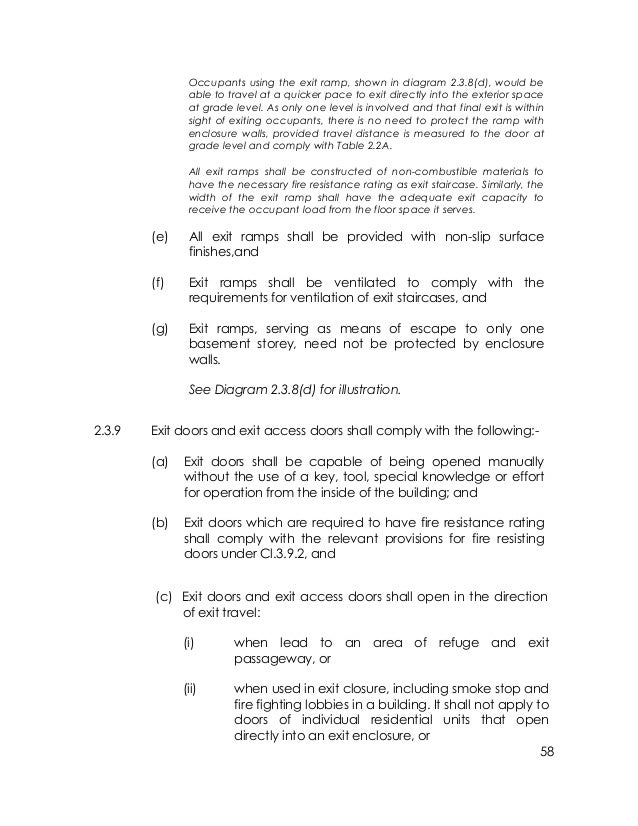Require Buffered Floor Space For Passageways Exit Door

The travel distance serves to limit the distance a person is required.
Require buffered floor space for passageways exit door. Where there is only one exit access leading to an exit or exit discharge the width of the exit and exit discharge must be at least equal to the width of the exit access. 5 10 1 4 where floor proximity exit signs are specifically required by chapters 8 through 30 exit signs shall be placed near the floor level in addition to those signs required for doors or corridors by 5 10 1 2 and 5 10 1 3. A side hinged exit door must be used. Other requirements that apply to exit routes include the following.
Doors that connect any room to an exit route. 1 any ventilation openings on the external wall between the exit passageway and the rest of the floor space shall be of non combustible construction fixed at a level of at least 1 8m measured from the finished floor level of the passageway to the sill level of the openings and such ventilation openings shall be located not less than 3m from any opening of an exit staircase. These doors must swing out in the direction of exit travel if the room is to be occupied by more than 50 people or if the room is a high hazard area. In the case of a floor area designed with minimum two exits the maximum travel distance as given in table 2 2a shall be applicable.
Side hinged exit doors must be used to connect rooms to exit routes. Leading to the exit discharge. They must be free of devices or alarms that could restrict use of the exit route if the device or alarm fails. These doors must swing out in the direction of exit travel if the room is.
Exit routes must support the maximum permitted occupant load for each floor served and the capacity of an exit route may not. This is the part of the definition with which manufacturers and suppliers are the most concerned. Examples of exits as defined by the building codes include exterior exit doors separated exit stairs and exit passageways. Travel to the exit discharge is how the building codes define the exit.
The maximum travel distance starting from the most remote point in any occupied space to the nearest exit shall not exceed the limits specified in table 2 2a. 1910 36 g 3 the width of an exit route must be sufficient to accommodate the maximum permitted occupant load of each floor served by the exit route. R rationale clause 2 2 6a. Exit doors must be unlocked at all times.



.tmb-firecode.png?sfvrsn=163d35a4_1)












